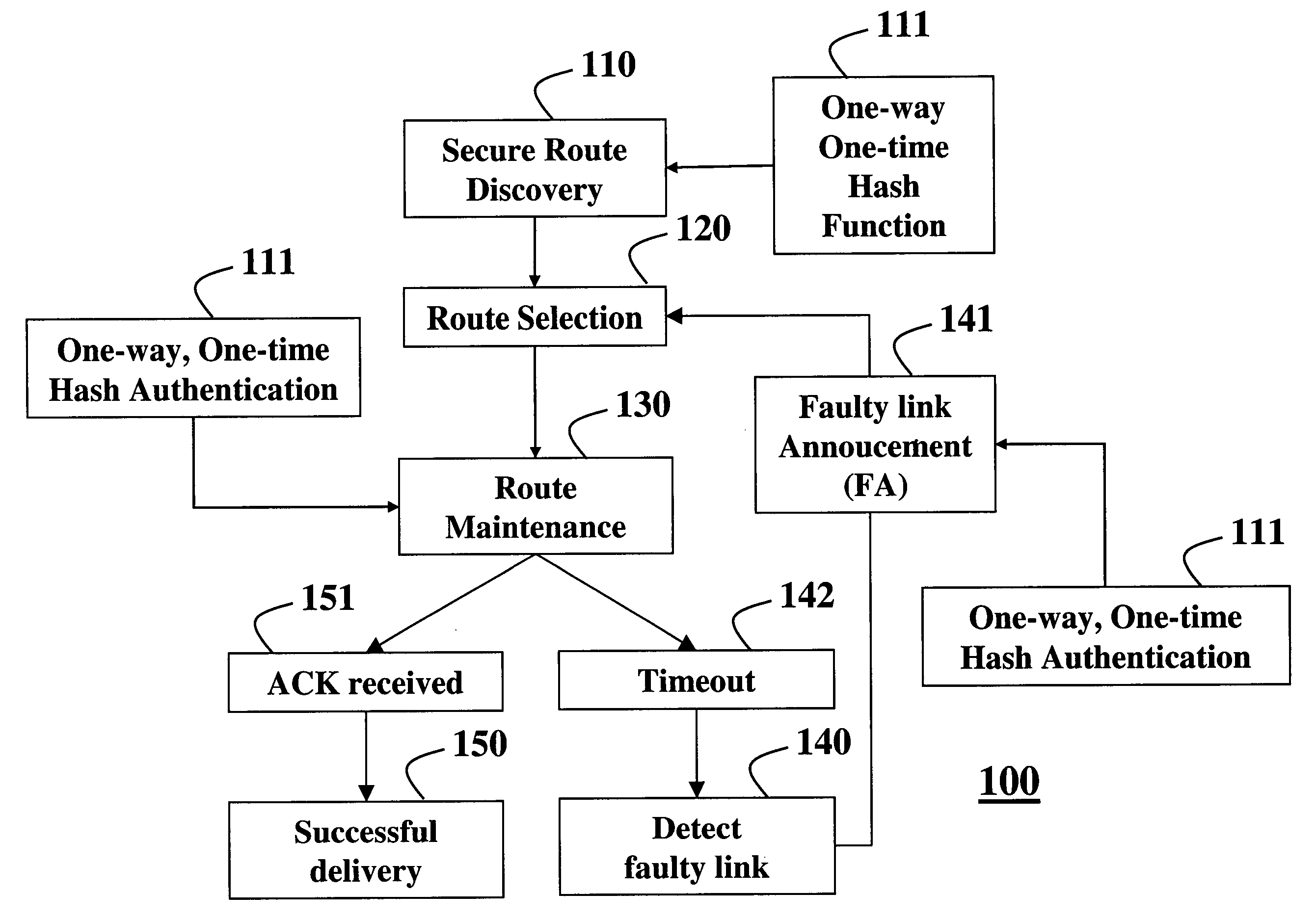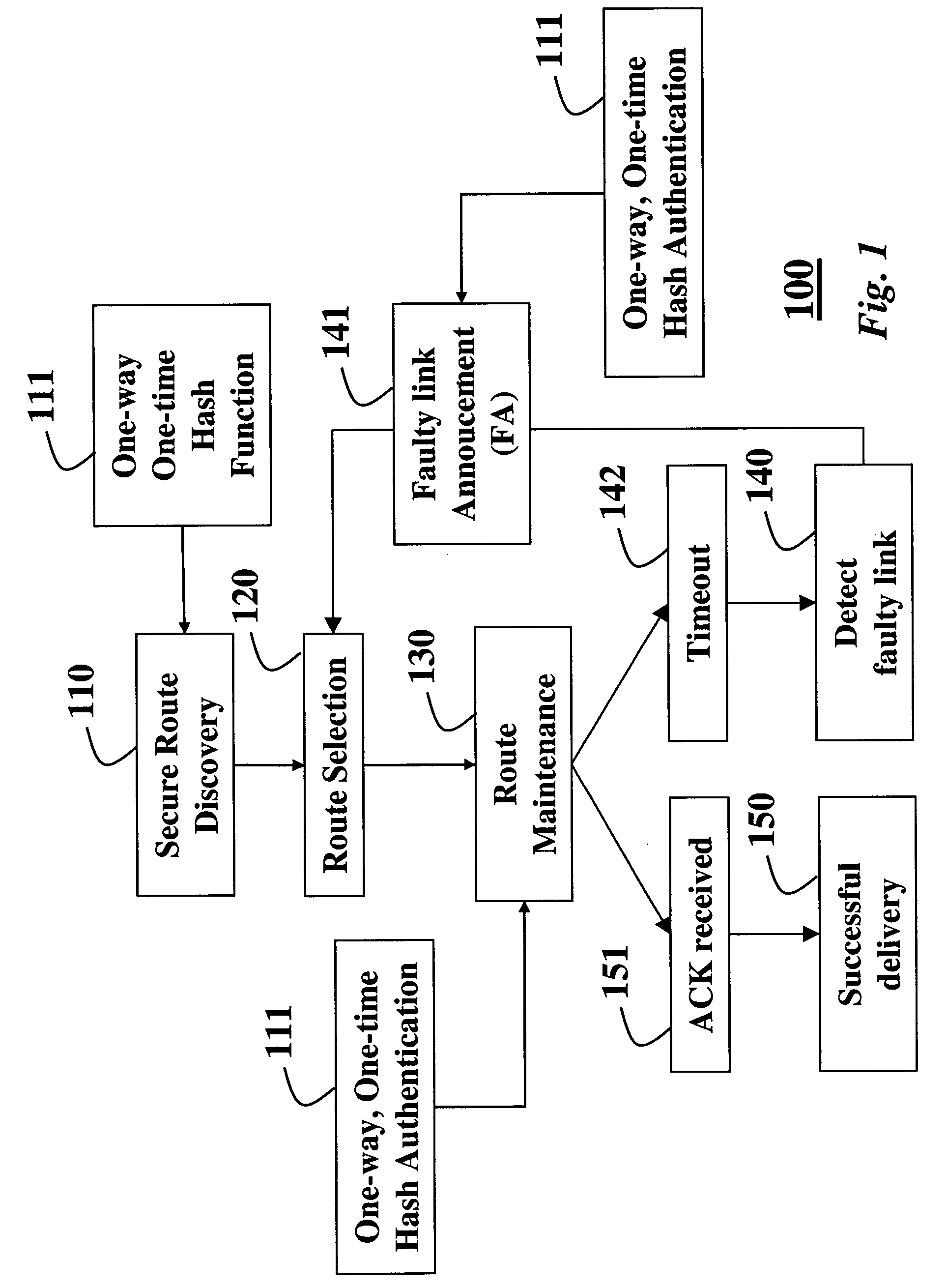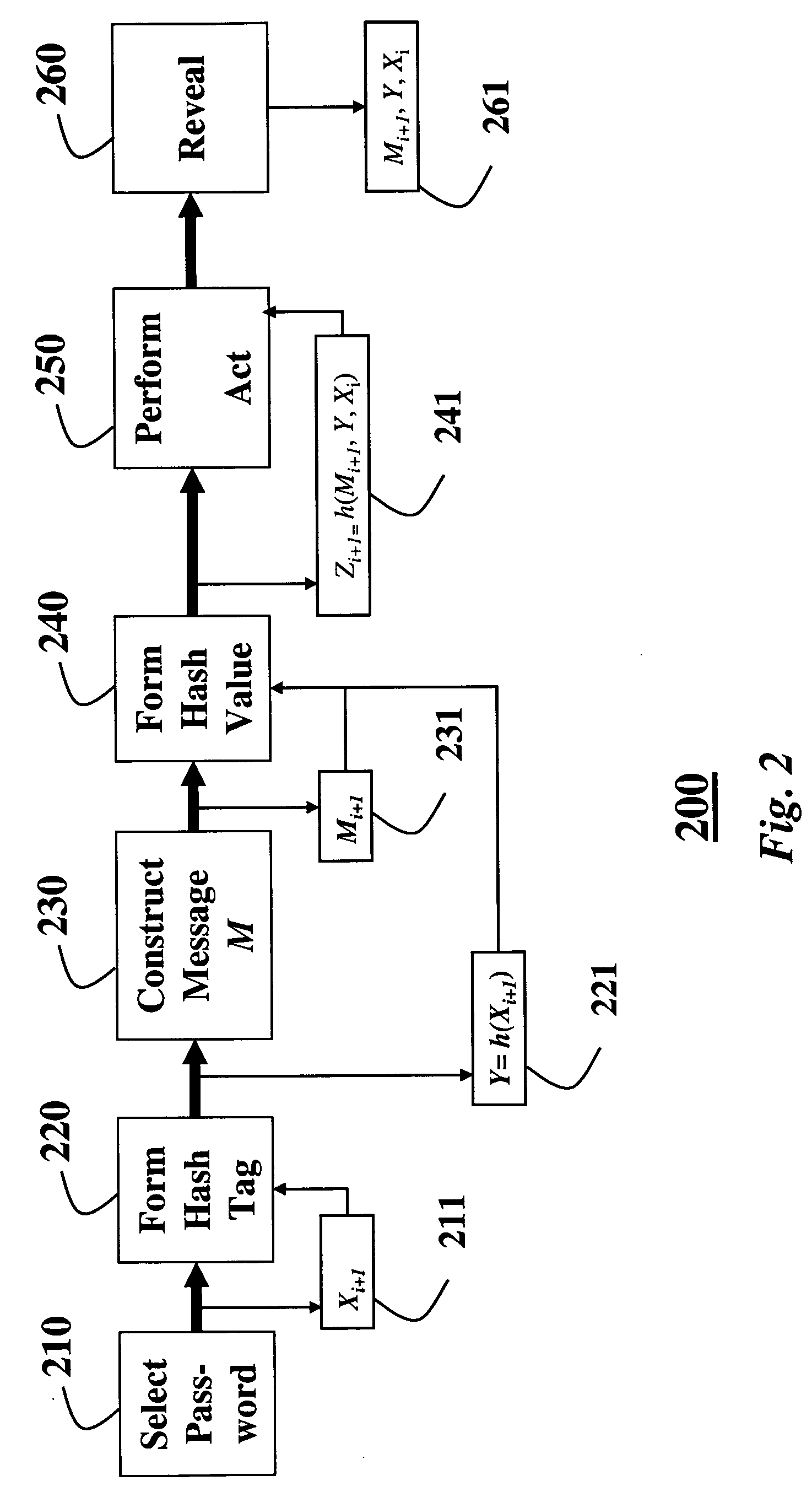Secure routing protocol for an ad hoc network using one-way/one-time hash functions
a security routing and ad hoc network technology, applied in the field of secure routing in wireless networks, can solve the problems of frequent changes in network topology, limited resources, lack of fixed infrastructure support,
- Summary
- Abstract
- Description
- Claims
- Application Information
AI Technical Summary
Problems solved by technology
Method used
Image
Examples
Embodiment Construction
System Operation
As shown in FIG. 1, our invention provides an authentication protocol 100 for a wireless ad hoc network where packets are transmitted serially. By serially, we mean a current packet pi is immediately preceded by a previous packet pi−1, and followed immediately by a next packet pi+1.
More particularly, during a route discovery phase 110, we provide secure route selection 120, i.e., a shortest intact route, that is, a route without any faulty links. During route maintenance phase 130, while packets are forwarded, we also detect 140 faulty links 141 based on a time out condition 142. Receiving an acknowledgement control packet 151 signals successful delivery 150 of a packet.
Guy Fawkes Protocol
For packet authentication, we use a one-way / one-time function 111 based on a protocol described by Ross et al., “A New Family of Authentication Protocols,” ACMOSR: ACM Operating Systems Review, ACM Press, Vol. 32, pp. 9-20, October 1998, which is known as the Guy Fawkes Pro...
PUM
 Login to View More
Login to View More Abstract
Description
Claims
Application Information
 Login to View More
Login to View More - R&D
- Intellectual Property
- Life Sciences
- Materials
- Tech Scout
- Unparalleled Data Quality
- Higher Quality Content
- 60% Fewer Hallucinations
Browse by: Latest US Patents, China's latest patents, Technical Efficacy Thesaurus, Application Domain, Technology Topic, Popular Technical Reports.
© 2025 PatSnap. All rights reserved.Legal|Privacy policy|Modern Slavery Act Transparency Statement|Sitemap|About US| Contact US: help@patsnap.com



